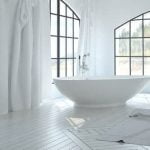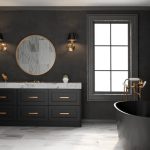Are you wondering how much to spend on decorating a home? The truth is, setting a budget for home decor is crucial for achieving the look and feel you desire without overspending. In this article, we will delve into the importance of budgeting for home decor and provide practical tips for finding the right balance between quality and cost.
When it comes to decorating a home, it’s easy to get carried away with the endless possibilities and choices available. However, understanding the importance of budgeting for home decor is essential in order to avoid overspending and ensure that you allocate your resources wisely. Whether you are furnishing a new home or revamping your current space, having a realistic budget in place can make all the difference in achieving your desired aesthetic.
In this article, we will explore various aspects of budgeting for home decor, including assessing your decorating needs, setting a realistic budget based on different factors, researching costs of home decor items, prioritizing expenses, and exploring DIY options versus hiring professionals. By understanding these key elements, you will be better equipped to make informed decisions about how much to spend on decorating your home while still achieving the stylish look you desire.
Assessing Your Decorating Needs
When it comes to decorating a home, it is important to first assess your decorating needs and determine what you want to achieve. Whether you are looking to completely revamp your home’s interior or simply make a few updates, having a clear understanding of your goals will help you set a realistic budget and prioritize your expenses.
Evaluating Your Space
Begin by evaluating the space or spaces that you want to decorate. Consider the size of the room, the existing furniture and decor, and any specific requirements or limitations that may impact your decorating plans. By taking the time to assess your space, you can better determine what changes or additions are necessary to achieve your desired look.
Identifying Your Style
It’s also important to identify your personal style and aesthetic preferences when assessing your decorating needs. Whether you prefer modern minimalism, classic elegance, or eclectic bohemian vibes, understanding your style will help guide your decorating decisions and ensure that you create a cohesive and visually appealing space.
Setting Priorities
Once you have a clear understanding of your space and personal style, prioritize your decorating needs based on what is most important to you. This could include investing in key furniture pieces, updating lighting fixtures, refreshing wall paint or wallpaper, or adding decorative accents such as artwork or textiles. Setting priorities will help you allocate your budget where it matters most and avoid overspending on unnecessary items.
By thoroughly assessing your decorating needs and determining what you want to achieve, you will be better equipped to set a realistic budget and make informed decisions about how to allocate your funds for home decor projects.
Setting a Realistic Budget
When setting a realistic budget for decorating your home, there are several factors that you need to consider in order to ensure that you are able to achieve the desired look without overspending. The first factor to consider is the size of the space that you are looking to decorate.
Larger spaces may require a higher budget, as there will be more area to cover with furniture, decor, and accessories. On the other hand, smaller spaces may allow for a more modest budget without sacrificing style.
Another important factor to take into account when determining your decorating budget is the quality of the items that you are considering. High-quality, durable furniture and decor pieces may come with a higher price tag initially, but they can ultimately save you money in the long run by lasting longer and requiring less frequent replacement.
It’s also crucial to consider any additional costs that may arise during the decorating process, such as hiring professionals for installation or construction work. These costs should be factored into your overall budget from the beginning to avoid any financial surprises along the way. By carefully considering these factors and setting a realistic budget based on your specific needs and priorities, you can ensure that you create a stylish and comfortable living space without breaking the bank.
| Factors | Considerations |
|---|---|
| Size of Space | Larger spaces may require a higher budget |
| Quality of Items | Durable pieces may have a higher initial cost but can save money in the long run |
| Additional Costs | Hiring professionals for installation or construction work should be factored into the budget from the beginning |
Researching Costs
When it comes to decorating your home, understanding the average cost of home decor items is crucial in setting a realistic budget. This involves researching the prices of furniture, accessories, lighting, textiles, and other decorative elements that you plan to purchase for your space. By knowing the average costs of these items, you can determine how much you need to allocate for each category and avoid overspending.
According to recent data, the average cost of furnishing a living room ranges from $2,500 to $5,000, while the cost of decorating a bedroom can range from $1,500 to $7,500. Factors such as quality, brand, style, and customization can significantly impact these costs. Additionally, it’s important to consider any additional expenses such as delivery fees or installation costs when budgeting for home decor items.
In addition to furniture and accessories, it’s also essential to research the average costs of hiring professionals for tasks such as painting, wallpaper installation, and carpentry work. On average, homeowners spend around $3 – $6 per square foot for interior painting services and around $251 – $773 for wallpaper installation. Having a clear understanding of these costs will help you make informed decisions when determining your overall decorating budget.
| Home Decor Item | Average Cost Range |
|---|---|
| Living Room Furniture | $2,500 – $5,000 |
| Bedroom Decor | $1,500 – $7,500 |
| Interior Painting Services | $3 – $6 per sq ft. |
| Wallpaper Installation | $251 – $773 |
Prioritizing Your Expenses
When it comes to decorating your home, it’s important to prioritize your expenses and decide where to allocate your decorating budget. By doing so, you can ensure that you are making the most out of your budget and achieving the results you want for your home. Here are some factors to consider when prioritizing your expenses for home decor:
- Assessing Your Needs: Take a look at the different areas of your home that need attention. Determine which areas are in most need of an update or renovation.
- Setting Priorities: Once you have assessed your needs, prioritize the areas that are most important to you. Whether it’s the living room, bedroom, kitchen, or bathroom, decide where you want to focus your budget.
- Considering Long-term Investments: Some home decor items or renovations can be considered as long-term investments. For example, investing in quality furniture or fixtures that will last for years can be a wise use of your budget.
It’s also important to consider the functionality of the spaces you’re decorating. If certain rooms serve multiple purposes or receive heavy foot traffic, allocating more of your budget towards durable and practical furnishings may be necessary. By setting clear priorities and allocating your budget accordingly, you can achieve a stylish and functional home within your means.
DIY vs Hiring Professionals
When it comes to decorating your home, one of the decisions you will have to make is whether to take on certain projects yourself or hire professionals. This decision can have a significant impact on the overall cost of your decorating endeavors. Here are some factors to consider when weighing the DIY option against hiring professionals:
- Skill level: Assess your own skills and abilities when it comes to home decorating. Some tasks, such as painting or simple crafting, may be easily accomplished by a novice DIYer, while more complex projects like installing new flooring or electrical work may require professional expertise.
- Time commitment: Consider how much time you are willing and able to dedicate to home decorating. DIY projects often require a significant time investment, so if you have a busy schedule, hiring professionals may be worth the cost in order to save time and hassle.
- Cost comparison: Research the costs associated with hiring professionals for various decorating tasks versus the expenses involved in purchasing materials and doing it yourself. In some cases, DIY may be more cost-effective, while in others, hiring professionals could be the smarter financial choice.
In many cases, finding a balance between taking on certain projects yourself and enlisting professional help can result in significant cost savings while still achieving stylish and high-quality results. Before making a decision, carefully consider your skills, time availability, and budget in order to determine the best approach for each specific home decorating project. With careful planning and consideration, you can create a beautiful living space without breaking the bank.
Tips for Stretching Your Budget
When it comes to decorating your home on a budget, there are plenty of creative ways to achieve a stylish and comfortable living space without breaking the bank. By following some simple tips and tricks, you can make the most of your decorating budget and transform your home into a beautiful and inviting space.
Shop Secondhand
One of the easiest ways to stretch your decorating budget is by shopping for secondhand furniture, decor, and accessories. Thrift stores, garage sales, and online marketplaces offer a wide selection of pre-loved items at affordable prices. With a little bit of creativity and some DIY skills, you can breathe new life into old pieces and give them a fresh, stylish look that fits your home’s aesthetic.
Get Crafty
Another way to save money on home decor is by getting crafty and making your own decorations. From homemade artwork to handcrafted throw pillows and unique wall hangings, there are endless possibilities for DIY decor projects that can add a personal touch to your home without costing a fortune. Plus, crafting can be a fun and fulfilling way to spend your time while creating one-of-a-kind pieces for your home.
Repurpose and Upcycle
Repurposing and upcycling items from around your home or from thrift stores is an excellent way to save money on decorating. Whether it’s turning old crates into stylish storage solutions or repurposing vintage doors into statement piece furniture, thinking outside the box can lead to unique and budget-friendly decor options. By giving new life to existing items, you not only save money but also reduce waste and contribute to sustainable living.
Final Thoughts
In conclusion, finding the right balance between quality and cost is crucial when it comes to decorating a home. It’s important to understand that creating a stylish and comfortable living space doesn’t have to break the bank. By carefully assessing your decorating needs and setting a realistic budget, you can achieve the look you desire without overspending.
One key factor in finding this balance is prioritizing your expenses. Determine where you want to allocate your decorating budget based on what is most important to you. Whether it’s investing in high-quality furniture or focusing on smaller decorative items, establishing priorities can help you make wise spending decisions.
Additionally, consider the option of DIY projects versus hiring professionals. While DIY projects can save money, sometimes it’s worth investing in the expertise of a professional for certain aspects of home decorating. Lastly, don’t underestimate the power of creativity when it comes to stretching your budget.
There are countless ways to achieve a stylish home on a budget through upcycling, thrifting, and finding affordable alternatives to expensive decor items. Ultimately, by being mindful of your finances and making informed choices, you can strike the perfect balance between quality and cost in home decorating.
Frequently Asked Questions
What Is the Average Cost of Home Decor?
The average cost of home decor can vary widely depending on individual preferences and the scope of the project. It can range from a few hundred dollars for small updates like new throw pillows or artwork, to several thousand dollars for larger items like furniture, rugs, and custom window treatments.
Ultimately, the average cost will depend on factors such as the size of the space, quality of materials, and whether professional help is needed.
What Is a Reasonable Budget for Interior Design?
A reasonable budget for interior design also varies depending on the specific goals and requirements of the project. Generally speaking, homeowners should expect to allocate anywhere from 10% to 20% of their home’s value for interior design purposes.
For example, if a home is valued at $300,000, a reasonable budget could be between $30,000 and $60,000. However, smaller projects may require less funding while full-scale renovations or redesigns could demand higher budgets.
What Is the 2 3 Rule in Decorating?
The 2-3 rule in decorating refers to the concept that within a single room or space, there should be two primary colors and three accent colors used in decor. This guideline helps create a cohesive and visually appealing look without overwhelming the senses with too much color variation.
By maintaining this balance of colors throughout the room’s furnishings, walls, and accessories, it can help achieve a harmonious and well-designed interior aesthetic.

I’m thrilled to be your companion on this exciting journey through the world of home decor and design. With a passion for turning houses into homes and a keen eye for the finer details, I’m here to help you transform your living spaces into beautiful, functional, and meaningful havens.





